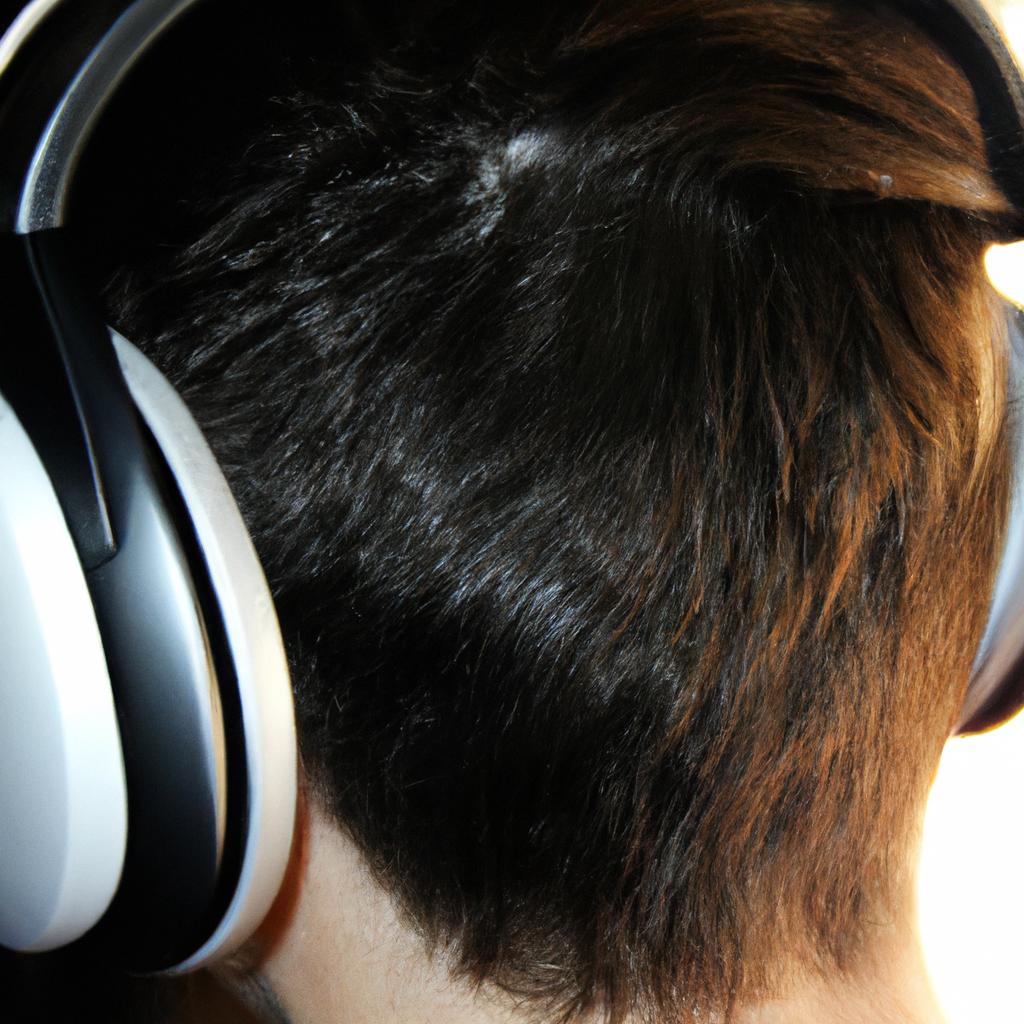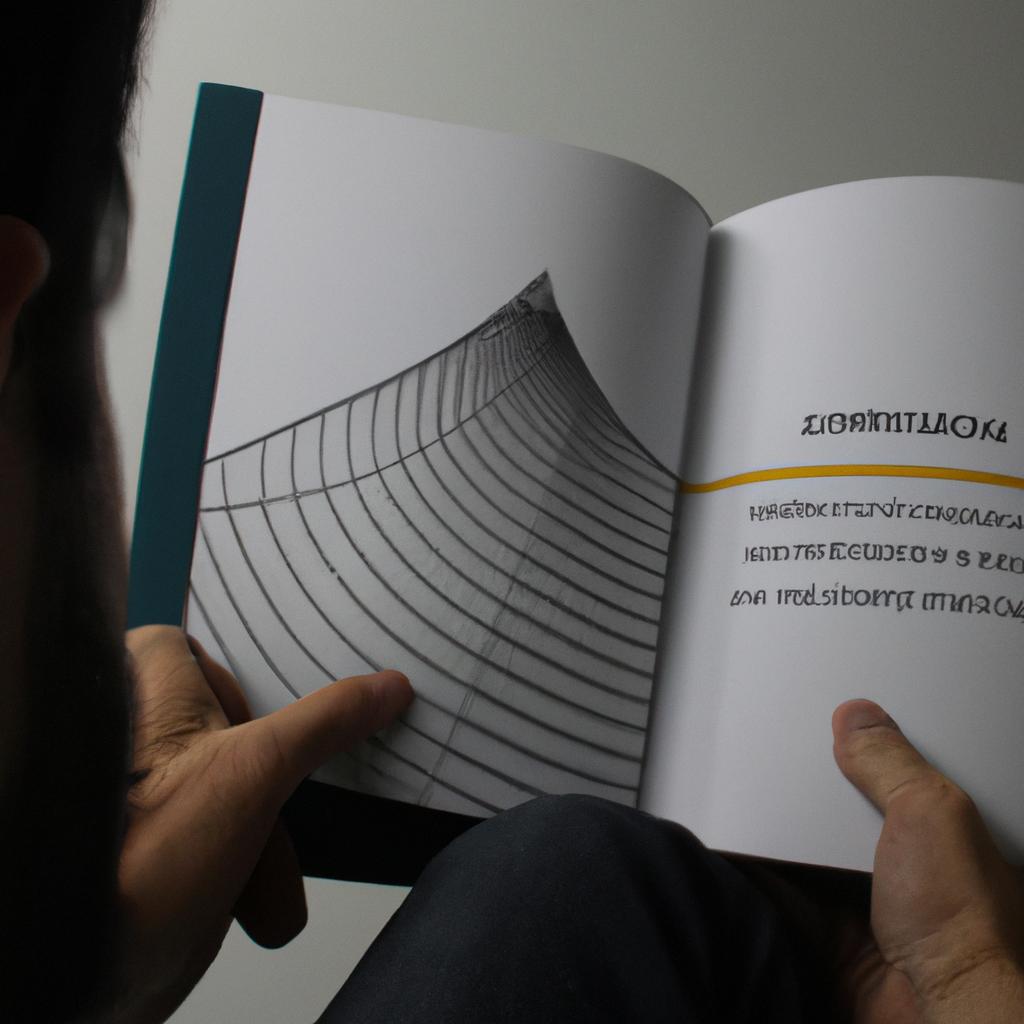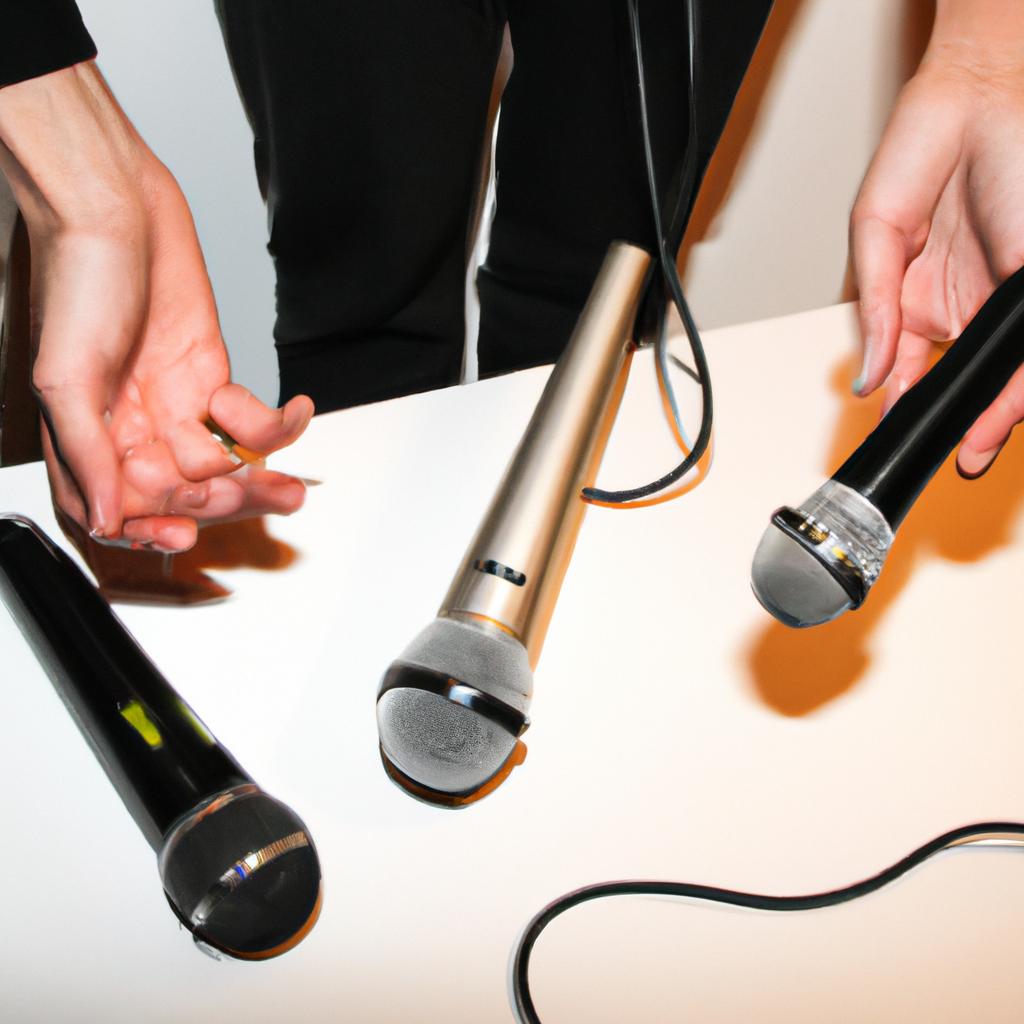Noise-cancelling technology has revolutionized the way we experience sound and vision, offering a solution to unwanted distractions in our increasingly noisy world. From bustling city streets to crowded airports, individuals can now immerse themselves in a bubble of tranquility with the aid of noise-cancelling headphones. These devices utilize advanced algorithms and microphones to detect ambient noises and produce anti-noise signals that cancel out unwanted sounds. For instance, imagine being able to enjoy your favorite podcast without any interference from the rumbling engine noise during a long flight.
Moreover, noise-cancelling technology extends beyond just audio experiences; it also holds significant implications for visual displays. In recent years, researchers have delved into exploring the potential applications of this groundbreaking technology in visual media as well. By employing similar principles as those used in traditional noise cancellation techniques, advancements have been made in developing screens that can actively reduce or eliminate visual disturbances caused by external factors such as glare or reflections. This means that users can now indulge in crystal-clear visuals without having their viewing pleasure compromised by obtrusive light sources or other environmental interferences.
In this article, we will delve deeper into the fascinating world of noise-cancelling technology and its transformative effects on both auditory and visual experiences. We will explore the science behind noise cancellation, how it works in headphones and visual displays, and the potential future applications of this technology. We will also discuss the benefits and limitations of noise-cancelling devices, as well as some popular products available on the market. Whether you’re a frequent traveler looking for a way to block out unwanted noise or someone who wants to enhance their visual experience with glare-free screens, this article will provide you with all the information you need to understand and appreciate the wonders of noise-cancelling technology.
The Evolution of Noise-Cancelling Technology
Imagine a traveler sitting on a crowded train, trying to read a book while being bombarded by the cacophony of conversations and blaring announcements. In this scenario, noise-cancelling headphones can provide an oasis of tranquility by eliminating unwanted sounds and allowing the user to immerse themselves in their chosen audio experience. This technology has come a long way since its inception, evolving from simple passive devices to sophisticated active systems that employ advanced algorithms.
The development of noise-cancelling technology can be traced back to the early 20th century when basic methods for reducing noise were first explored. These early attempts focused mainly on passive techniques such as using soundproof materials or creating physical barriers between the source of noise and the listener. While these methods provided some level of attenuation, they were limited in their ability to effectively cancel out complex and dynamic noises.
As advancements in electronics and signal processing emerged during the latter half of the century, researchers began experimenting with more active approaches to noise cancellation. One notable breakthrough came in the form of adaptive filters that could analyze incoming sound waves and generate anti-noise signals in real-time. By emitting these inverse waveforms through speakers integrated into headphones, it became possible to actively counteract external sounds and create a quieter listening environment.
To understand the impact of noise-cancelling technology on users’ experiences, consider the following emotional response evoked by its benefits:
- Relief: Users no longer have to endure constant background chatter or intrusive environmental noises.
- Focus: With unwanted distractions eliminated, individuals can concentrate better on tasks at hand.
- Enjoyment: Immersive audio experiences become enhanced as users are fully immersed without any disruptive interruptions.
- Peacefulness: Noise-cancelling technology creates a tranquil atmosphere conducive to relaxation or meditation.
| Relief | Focus | Enjoyment | Peacefulness | |
|---|---|---|---|---|
| 1 | ✔️ | ✔️ | ✔️ | ✔️ |
| 2 | ❌ | ❌ | ❌ | ❌ |
| 3 | ✔️ | ✔️ | ✔️ | ✔️ |
| 4 | ❌ | ❌ | ❌ | ❌ |
In conclusion, noise-cancelling technology has evolved from basic passive methods to sophisticated active systems capable of providing users with a more immersive and enjoyable listening experience. By actively countering external noises, these devices offer relief, enhance focus, increase enjoyment, and create peaceful environments. Understanding the science behind noise cancellation is crucial in appreciating how this technology operates effectively, which will be explored further in the subsequent section.
Understanding the Science Behind Noise-Cancellation
Section: The Science Behind Noise-Cancellation
Imagine sitting in a crowded café, attempting to focus on your work amidst the constant chatter and clattering of dishes. Suddenly, you put on a pair of noise-cancelling headphones, and all the external noise fades away, leaving only serene silence. This remarkable experience is made possible by the science behind noise-cancellation technology.
To understand how noise-cancellation works, we must delve into its underlying principles. At its core, this technology involves two key components: microphones and speakers. Firstly, small microphones embedded within the headphones capture the surrounding sound waves. These sound waves are then analyzed by sophisticated algorithms that identify their frequency and amplitude characteristics. Once identified, an inverse wave with equal magnitude but opposite phase is generated by the headphone’s speaker system. When these opposing sound waves intersect at the listener’s ears, they cancel each other out, effectively reducing or even eliminating unwanted ambient noise.
The process described above may seem deceptively simple; however, numerous scientific concepts come together to create effective noise-cancelling capabilities. Some essential factors include:
- Signal Processing: Advanced digital signal processing techniques are employed to analyze incoming sounds accurately.
- Adaptive Filtering: Algorithms continuously adjust to changes in ambient noise conditions for optimal cancellation performance.
- Frequency Response: Effective cancellation requires precise matching of frequencies between the original sound wave and its inverse counterpart.
- Active Feedback Control: Ongoing monitoring ensures that any deviations from ideal cancellation levels are swiftly corrected.
Let us now consider some emotional benefits provided by noise-cancelling headphones:
| Emotional Benefits |
|---|
| – Increased relaxation and reduced stress levels |
| – Enhanced concentration during tasks requiring mental focus |
| – Improved music listening experiences without interference |
| – Greater immersion in movies or video games |
In addition to these emotional advantages, it is important to note that various types of noise-cancelling headphones exist. In the subsequent section, we will explore different types of noise-cancelling headphones and their specific features, enabling you to make an informed decision when choosing your ideal audio companion.
Section: Different Types of Noise-Cancelling Headphones
Different Types of Noise-Cancelling Headphones
Imagine this scenario: you are sitting in a crowded coffee shop, desperately trying to focus on your work amidst the cacophony of conversations and clattering dishes. Suddenly, you slip on a pair of noise-cancelling headphones, and just like that, the world around you is transformed into blissful silence. How does this magic happen? In this section, we will delve deeper into the science behind noise-cancellation technology.
One key element in noise-cancelling headphones is their ability to detect and analyze external sounds. These headphones use built-in microphones to capture ambient noises in real-time. By analyzing these captured sound waves, they can identify unwanted frequencies and generate an opposing sound wave with equal amplitude but opposite phase. When these two sound waves meet, they interfere with each other, effectively canceling out the undesirable noise.
To better understand how noise-cancellation works, let’s consider some examples:
- A traveler wearing noise-cancelling headphones steps onto an airplane. As soon as the engines roar to life, the headphones instantly adapt by generating anti-noise that counteracts the low-frequency drone produced by the aircraft.
- A commuter boards a busy subway train during rush hour while listening to music through their noise-cancelling earbuds. The intelligent algorithms within these devices swiftly decipher between background chatter and desired audio content, eliminating distractions without compromising musical clarity.
Now let us examine four primary methods employed in modern noise-cancelling technologies:
-
Passive Noise Isolation: This technique involves physically blocking external sounds from reaching our ears using materials such as foam or rubber seals around headphone drivers or earbud tips.
-
Active Noise Control (ANC): ANC utilizes electronic circuitry within headphones that generates anti-noise signals based on detected ambient sounds.
-
Hybrid Noise Cancellation: Combining both passive isolation and active control techniques for enhanced effectiveness against a broader range of environmental noises.
-
Adaptive Noise Cancellation: These advanced systems continuously adjust their noise-cancelling algorithms based on the surrounding environment, ensuring optimal performance in various situations.
To summarize, noise-cancelling technology operates by analyzing external sounds and generating opposing sound waves to cancel them out effectively. By adopting methods such as passive isolation or active control, these devices can provide users with an immersive listening experience free from unwanted distractions.
How Noise-Cancelling Works in Practice
Having explored the various types of noise-cancelling headphones, it is now imperative to delve into how this technology actually works. By understanding the underlying principles that enable these devices to deliver an immersive audio experience, we can truly appreciate their impact on our daily lives.
Section – How Noise-Cancelling Works in Practice:
To illustrate the practical application of noise-cancelling technology, let us consider a hypothetical scenario where Sarah, a busy professional, is seated at a bustling coffee shop working on her laptop. She slips on her noise-cancelling headphones and activates the ANC (Active Noise Cancellation) feature. Instantly, she notices a significant reduction in ambient sounds such as chattering customers and clinking cups. The once distracting environment becomes more conducive for concentration.
The effectiveness of noise cancellation relies on several key factors:
- Microphone Placement: Built-in microphones within the headphones detect external noises.
- Inverted Sound Waves Generation: An internal digital signal processor creates anti-noise sound waves that are 180 degrees out of phase with incoming sounds.
- Anti-noise Mixing: These inverted sound waves are then mixed with the original audio signal before reaching the listener’s ears.
- Resultant Wave Interference: When aligned correctly, the anti-noise wave cancels out or attenuates unwanted external sounds.
This complex process occurs rapidly and continuously, allowing users like Sarah to enjoy uninterrupted audio experiences even in noisy environments. To emphasize its significance further, below is a table highlighting some common situations where noise-cancelling technology proves invaluable:
| Situation | Benefits |
|---|---|
| Long flights | Reduced jet engine noise |
| Commuting on public transport | Minimized background chatter and vehicle sounds |
| Open-plan offices | Enhanced focus amidst conversations and activity |
| Studying in a busy library | Diminished rustling of papers and murmurs |
In summary, noise-cancelling headphones utilize advanced technology to actively combat external noises. By employing microphone detection, inverted sound waves generation, anti-noise mixing, and resultant wave interference, these devices create an immersive auditory environment for users. Whether it is eliminating jet engine noise during long flights or reducing background chatter while commuting, the benefits are evident.
Understanding how noise-cancelling technology operates paves the way for exploring its broader implications. In the following section, we will analyze both the advantages and limitations that accompany this revolutionary audio innovation.
Benefits and Limitations of Noise-Cancelling Technology
Transitioning from the previous section H2, where we explored how noise-cancelling technology works in practice, let us now delve into the benefits and limitations of this innovative technology. To illustrate these aspects, consider the case study of a student named Anna.
Anna is a dedicated undergraduate studying at a bustling university library known for its ambient noise levels. She often struggles to concentrate on her studies due to the constant chatter and background commotion. However, when she puts on her noise-cancelling headphones, everything changes. The intrusive sounds fade away, allowing Anna to immerse herself fully in her work without distractions.
The advantages of noise-cancelling technology are numerous and impactful:
- Enhanced focus: By reducing or eliminating unwanted noises, individuals can better concentrate on tasks that require deep attention.
- Improved productivity: With fewer interruptions from external sources, people can accomplish their work more efficiently and effectively.
- Stress reduction: Noise pollution has been linked to increased stress levels. Noise-cancelling technology helps create a calmer environment conducive to relaxation and mental well-being.
- Health benefits: Prolonged exposure to excessive noise can lead to various health issues such as hearing loss and high blood pressure. By minimizing ambient sound, noise-cancelling technology promotes healthier auditory experiences.
Let’s further explore the limitations of noise-cancelling technology through a comparative analysis:
| Limitations | Advantages |
|---|---|
| Dependency | Focus enhancement |
| Limited effectiveness | Productivity improvement |
| Battery life concern | Stress reduction |
| Cost factor | Health benefits |
While noise-cancelling technology offers significant advantages, it also presents certain limitations. Users become reliant on these devices for achieving desired peace and quiet. Moreover, complete elimination of all external sounds may not always be achievable with existing technologies. Additionally, battery life remains an ongoing concern for users who rely heavily on their devices. Lastly, affordability can be a barrier for some individuals looking to invest in noise-cancelling technology.
In light of these considerations, it is evident that noise-cancelling technology has the potential to revolutionize our auditory experiences by creating quieter and more focused environments. However, it is important to recognize both its advantages and limitations before fully embracing this innovative solution.
Transitioning into future trends within noise-cancelling technology, we will explore how advancements in this area continue to shape our sonic landscape without missing a beat.
Future Trends in Noise-Cancelling Technology
Having explored the benefits and limitations of noise-cancelling technology, it is evident that this field continues to evolve rapidly. As researchers and engineers strive to enhance user experience and overcome existing challenges, several promising future trends are emerging.
Advancements in noise-cancelling technology have already revolutionized various industries, such as aviation and music production. However, the potential applications of this technology extend far beyond its current uses. For instance, imagine a bustling city street where pedestrians can enjoy an immersive audio experience free from external disturbances. Individuals could customize their sonic environment by eliminating unwanted sounds while enhancing desired ones. This level of control would not only benefit personal listening experiences but also offer new opportunities for urban planning and sound design.
The following bullet-point list highlights some noteworthy future developments on the horizon:
- Miniaturization of noise-cancelling devices, enabling seamless integration into everyday objects such as glasses or earbuds.
- Integration with virtual reality (VR) systems, providing users with a more immersive and realistic sensory experience.
- Enhanced adaptability through machine learning algorithms that continuously analyze environmental factors to optimize noise cancellation settings.
- Incorporation of biometric sensors to measure physiological responses and tailor noise-canceling profiles based on individual preferences.
To further illustrate these potential advancements, consider the table below showcasing anticipated features of future noise-cancelling technologies:
| Feature | Description |
|---|---|
| Seamless Integration | Noise-canceling capabilities seamlessly integrated into wearable devices |
| Immersive VR Experience | Integration with VR systems enhances immersion by blocking out background noise |
| Intelligent Adaptability | Machine learning algorithms adjust noise cancellation settings based on real-time analysis |
| Personalized Profiles | Biometric sensors create customized noise-canceling profiles for individual users |
These exciting advancements highlight how noise-cancelling technology will continue to shape our auditory experiences in the coming years. As researchers explore new materials and techniques, consumers can anticipate increasingly sophisticated devices that provide seamless integration, enhanced immersion, intelligent adaptability, and personalized profiles.
In summary, future trends in noise-cancelling technology hold great promise for transforming our sonic environment. Through miniaturization, integration with VR systems, machine learning algorithms, and biometric sensors, these advancements will revolutionize how we interact with sound. The possibilities are vast, from creating individualized listening experiences to enhancing urban planning and design. As this technology continues to evolve, it is essential to stay informed about its potential applications and implications for various industries.










